“No triumph of either my stage or screen career has ever rivaled the excitement of trips down the Mississippi on the riverboats with my father.” –Irene Dunne
Irene Dunne was one of the most down-to-earth of all classic Hollywood film stars. Like so many other greats, she was from the Midwest, hailing from Louisville, Kentucky. A devout Roman Catholic, she was the daughter of a riverboat captain father and concert piano teacher mother. While her father influenced her sense of humor and self-identity, her mother acted as Dunne’s mentor in the creative arts. Thanks to Margie Schultz’s bio-bibliography, I was able to thumb through the immense body of work that Irene left behind, and gain a fuller understanding of a deeply admirable woman.
Irene was actually born Irene Marie Dunn on December 20th, 1898, in her parent’s home at 507 East Gray Street in Louisville, Kentucky. (There are discrepancies about her birth year, but church records do confirm that it was 1898.) In fact, Irene was almost born on a riverboat. Her parents were heading for Madison, Indiana, but were forced to disembark in Louisville upon Irene’s pending birth. Two years later, the Dunns would also welcome a son named Charles.
Irene spent much of her childhood years in both Louisville and St. Louis since her father was transferred when he was promoted to supervising steamboat inspector. Irene was taught by the Sisters of Loretta at St. Benedict’s Academy in Louisville, as well as at the Loretto Convent in St. Louis. She studied the expected school curriculum, as well as music, arts, and dramatics.
In a 1945 interview for Picturegoer, Irene recounted the following about her childhood in Louisville:
Our home in Louisville, Kentucky, […] was one of great happiness. Mother, Adelaide Henry of Newport, Kentucky was gentle, fair, very beautiful and in direct contrast to my dark-haired Irish father. Neither Charles, two years my junior, nor I ever tired of hearing about their courtship. ‘Twas said that father drove fifty miles each evening behind his spanking team of horses to keep his date with the Southern girl – carefully chaperoned by FOUR maiden aunts. “Truly a courageous undertaking it was my dear,” he solemnly told us years later.
Unfortunately, Irene would lose her father at an early age. However, his dying words became her credo. Dunne recounted:
“Happiness is never an accident,” he told me. “It is the prize we get when we choose wisely from life’s great stores. Don’t reach out wildly for this and that and the other thing. You’ll end up empty-handed if you do. Make up your mind what you want. Go after it. And be prepared to pay well for it. I hope that you’ll go after the rooted things – the self-respect that comes when we accept our share of responsibility. Satisfying work. Marriage. A home. A family. For these are the things that grow better with time, not less. These things are the bulwarks of happiness.”
Upon her father’s death from a kidney infection, Adelaide moved the family to Madison, Indiana. Adelaide’s father, Charles Henry, operated the boiler works which constructed and installed the boilers in riverboats traveling the Ohio and Mississippi. The family lived at 916 W. Second Street, with Irene’s grandparents nearby at 918 W. Second Street.
Irene graduated from Madison Grammar School in 1913, and also appeared in her first stage role as Mustard in A Midsummer Night’s Dream. She also took on a role in a performance of St. Cecelia. The play received so much positive praise that the cast traveled to Kentucky for an additional performance, prompting Irene’s first roadshow.
Despite participating in an acting performance, Irene was especially interested in music and voice, with the support of her mother. The Madison Current Events Club awarded Irene a scholarship for a music course at the Oliver Willard Pierce Academy of Fine Arts in Indianapolis.
While Irene’s family attended St. Michael’s Catholic Church in Madison, Irene also sang with the First Baptist Church choir. This was her first professional engagement, and she was paid a sum of ten dollars for each service.
Irene graduated from Madison High School in 1916, with the school yearbook referring to her as “Dunnie,” and mentioning her involvement in the choir. A yearbook quote describes Irene as “divinely tall and most divinely fair.”
Upon earning a teaching certificate in 1918, Irene was en route to Gary, Indiana, to accept a teaching position as an art instructor when she paused her journey to visit family in Chicago. There, she learned of a voice contest and decided to enter upon impulse. Irene won a scholarship to Chicago Musical College, leading her to study voice, sight-reading, harmony, music history, pedagogy, French, and Italian. The college was founded by Dr. Florenz Ziegfeld, the father of the theatrical Ziegfeld.
Irene’s dream was to work at New York’s Metropolitan Opera House. She auditioned there in 1920 but failed to receive a role. However, a friend of hers suggested Irene for another role in a touring company. After hearing Irene sing, the business manager was ready to offer her the role, so long as the choreographer approved of her. He didn’t. Upset, she left her bag at the theater on her way out. Once she returned for it, the manager and choreographer promised her a role if she would study with the company’s ballet mistress. She was then granted the title role in the touring company of Irene, without any professional stage experience.
Irene spent the next few years as an understudy or performing bit parts in Broadway shows, while still studying music. Her first leading role in a Broadway musical came in 1928’s Luckee Girl. Though she received great praise, the show closed after 81 performances.
Irene would meet her husband, Dr. Frank Griffin, at a party held at the Biltmore Hotel. A 1936 issue of Silver Screen recounts their courtship:
“Where have you been all my life?” asked the first stag who managed an introduction and a dance.
“I’m from Louisville, Kentucky,” said Irene.
“Where have you been all my life?” asked the second fortunate young man.
“I’m from Madison, Indiana,” said Irene.
“Where have you been all my life?” asked the third young man. (No, there wasn’t much originality among the smart set during the speakeasy era.)
“I’m from St. Louis,” said Irene. But the fourth young man took her completely by surprise.
“The boys think you are teched in the head,” he said casually. “It seems that you don’t know where you’re from. You’ve given each of then a different answer. Is it an old Southern custom?”
“I beg your pardon,” said Irene becoming rigid with dignity, “I’m not teched in the head. I was born in Louisville, Kentucky. I lived in Madison, Indiana. I was educated in St. Louis and Chicago. And I don’t see that it is anyone’s business anyway.”
At the end of the dance, Dr. Griffin said, “May I have your number?”
With hauteur, Irene drew herself up for the usual squelch, discourteous, “I don’t give my phone number to strangers.” But imagine her surprised horror when she heard her voice saying, and not so coldly either, “It’s Plaza 5048.”
It was three months before Dr. Griffin called her. Irene had just about given up hope. Then it came at last.
“Hello, there,” he said, “Do you remember me?”
“Yes,” said Irene, all a-flutter, “I-I mean, no.”
They married on July 16th, 1928, in a small New York church.
Though Irene was prepared to give up her career for marriage, her husband encouraged her to pursue performing, while he continued to run a dental practice.
Irene was offered a role in the Ziegfeld Follies but was horrified at the thought. Nonetheless, Ziegfeld remembered her when he was casting the road company of Show Boat. She began touring with the Boston company in 1929 in the role of Magnolia. Deeply connected with the character Irene portrayed, she mused:
I’ve always felt kindly towards fate for giving me my first success in “Show Boat.” Days and evenings at home were no less enchanting. Mother, an accomplished musician, taught me to play the piano as a very small girl. Music was as natural as breathing in our house.
It was Irene’s role in Show Boat that caught RKO’s attention, as the studio sent her a movie offer while she was touring. The studio was experiencing success with its musicals and wanted to add more stars to its repertoire. Irene moved to Hollywood, and she and Frank began life as a “bi-costal” couple.
Initially, Irene kept her marriage a secret from the prying press of Hollywood, thinking that it would hinder her chance at a career. While she was in California, Frank would stay with her brother, Charles, nearby. Although Irene shared the Hollywood home with her mother, she regretted not being able to spend more time with her husband. She took on several roles that mirrored her off-screen loneliness. Once Photoplay discovered the truth about her marriage, Irene said she was happy to finally talk about Frank.
Irene appeared in a string of well-received films, most notably Roberta (1935), which also featured Fred Astaire and Ginger Rogers. Irene’s renditions of “Smoke Gets in Your Eyes” and “Lovely to Look At” are show-stopping numbers.
Show Boat (1936) came to the screen in 1936, with Irene reprising her role as Magnolia. Prior to this film, audiences were used to seeing Irene in very polished and proper roles. Her comedic dancing and blackface number tickled audiences, which prompted studios to envision a comedic career for Dunne.
In response, Irene was offered the title role in Theodora Goes Wild (1936). However, Irene was reluctant to take on a comedic role, as she had not starred in a comedy before. Additionally, she wanted to play Madame Curie. However, Irene’s acceptance of the part began a new and wildly successful chapter in her career. The film was an instant hit and was almost as popular as It Happened One Night (1934). She would receive her second of five Academy Award nominations, thanks to her portrayal of Theodora.
It was around this time that two pivotal moments occurred in Irene’s life. First of all, her grandmother passed away. However, Irene and Frank also adopted a daughter named Mary Frances just weeks before. Irene claimed that her daughter helped her get over the loss. The following was shared in a 1937 interview for Screenland:
“She’s decidedly my best audience,” says Irene. But not only does she listen, she watches intently every movement Irene makes with her hands and lips. And then when Irene has finished, she mimics her. It’s quite the funniest thing you have ever seen. Missy thinks so too.
Following Theodora, another notable comedy in which Irene starred is The Awful Truth (1937), alongside Cary Grant. This film warranted her third Academy Award nomination, although she lost to Luise Rainer’s performance in The Good Earth (1937).
Irene paired with Charles Boyer to star in the dramatic Love Affair (1939), which was one of her favorite films. She claimed she loved the story and had fun making the film. Love Affair granted her a fourth Oscar nomination, but she lost to Vivien Leigh for Gone With the Wind (1939).
While making appearances on radio shows and taking on stage roles, Irene continued to churn out many popular films. A sampling includes My Favorite Wife (1940), Penny Serenade (1941), Anna and the King of Siam (1946), and I Remember Mama (1948), to name a few.
In the late 1940s, Irene made only one film per year, because she felt that quality roles for women her age were becoming less frequent. Instead, Irene focused her time on charitable organizations, working with the American Cancer Society, American Heart Association, and the American Red Cross. She also became involved in politics, defending the First Amendment following the House of Un-American Activities Committee’s investigations into supposed Communist activity.
Irene was honored by many organizations for her exemplary character and efforts. The Chicago Musical College gave her the honorary degree of Doctor of Music in 1945. She, Frank, and Mary Frances traveled to South Bend, Indiana, in 1949, where the University of Notre Dame promoted her with the Laetare Medal–a high honor given to a Catholic layperson. Irene also managed to attend a football game there.
She was also one of four honorees chosen by the National Conference of Christians and Jews. When asked if America was perfect, she responded:
When we have learned to love our neighbor, not just ourselves, no matter where he comes from, then America will be perfect.
Mount St. Mary’s College for Women also gave her an honorary degree of Doctor of Laws in 1949, for her loyalty to Catholic Principles in public and private.
Soon enough, Irene became a grandmother Mary Frances’s children, Mark and Ann Marie. Irene was close to her children and made a point of spending time with them, such as taking them swimming, shopping, or going to the movies.
As a side note, I spoke about this encounter with Ben Mankiewicz on the Turner Classic Movies channel as part of my discussion of Theodora Goes Wild. You can view my introductory and exit interview here:
Irene also made several television appearances. She even christened the Mark Twain stern-wheel riverboat at Disneyland, on July 17, 1955, fondly recalling memories of her father and a life among the riverboats.
Frank passed away in 1965 at the age of 79, and Irene took over many of his business interests. Prior to his passing, Irene would rarely be seen on the social scene, preferring to spend time with Frank. However, she continued to take on new challenges and became the first woman to be named to the board of directors of Technicolor, Inc.
Irene passed away on September 4th, 1990, survived by her daughter, grandchildren, great-granddaughter, and niece. She suffered from an irregular heartbeat, which led to heart failure. Her contemporaries mourned her loss, frequently referencing her kind, genuine, cultured, and good-humored nature. She was buried beside her husband at Calvary Cemetery after a mass in the mausoleum chapel. Requesting that her funeral be very private, her close friend Loretta Young was the only celebrity in attendance. Even Ronald Reagan was turned away when he requested an invitation to the funeral.
Irene’s legacy is still evident in the many towns that knew her. At heart, she was very much anchored to home and remembered her years in the Midwest with fondness.
It is always difficult to see a piece of Hollywood history erased. Sadly, Irene’s birth home has met that fate. 507 East Gray is now a parking lot. This is where her home would have stood.
Irene was baptized at St. John’s Catholic Church. While the parish has closed, the building still stands and has been converted into a shelter for homeless men. It is located at 700 East Muhammad Ali Blvd.
The premiere of My Favorite Wife was held in Irene’s hometown of Louisville. The show opened during the same week as the Kentucky Derby. A major homecoming celebration was held in Irene’s honor. The manager at the Rialto Theatre prepared all the “Hollywood trimmings” for the premiere. Among the many attendees were Sam and Bella Spewack (co-authors of the screenplay), Gene Fowler, David Butler, and Hal Roach. Irene made a point of it to take her husband around Madison, as well.
Here she is at the Rialto Theatre, which was located on 616 S. Fourth Street. It was razed in 1969.
I feel that Madison, Indiana, best captures Irene’s spirit and legacy. First of all, it is still a small town, situated along the same riverfront, and has almost stayed fixed in time. To this day, riverboats still drift by the intimate downtown area and lush riverfront.
The Dunne home still stands at 916 W. Second St., marked by a “Dunn” family plaque on the front door. This is where Irene lived after the death of her father.
Her grandparents’ home is next door, on the right.
The First Baptist Church where Irene first sang professionally stands at 416 Vine St.
St. Michael’s Catholic Church, Irene’s parish, also stands today. However, it no longer operates as a church. It is privately owned with plans to operate as a museum.
Prince of Peace Catholic Church is located at 413 E 2nd St. This was her mother’s initial parish. Irene contributed financially to the parish in the 1940s for a new altar and candlesticks.
Irene received her secondary education at Madison High School, which no longer stands today. However, a commemorative plaque may be viewed on the corner of W. 2nd Street and Central.
Irene donated $10,000 to the restoration of the town’s Broadway Fountain in 1976. The fountain is a beautiful and relaxing hub for the community. The fountain is lit up at night, and also receives holiday lights during the winter months.
Christ Episcopal Church, where Irene would also sing professionally, is located at 506 Mulberry St.
One of my favorite tributes to Irene stands thanks to a contribution she made to a boys’ camp, at the urging of her good friend Fritz Ernst. She contributed financially to the manufacturing of a new gate for the Camp Louis Ernst Boy Scout facility on Highway 7. The gate still exists and bears a special dedication to her. Dunne returned to Madison in December 1939 to help dedicate the gate.
I was able to correspond with a relative of the stonemason who worked on the Camp Louis Ernst gate. He provided me with these images from his family scrapbook, featuring Irene at the dedication.
A special historical marker for Irene exists just outside the Ohio Theater, at 105 E. Main Street.
Similar to the historical markers in her honor in Madison, there is also a marker in her honor on the Kentucky side of the Ohio River in Louisville. The scenic views and steamboats vividly conjure up images of Show Boat.
Irene also spent some time in Indianapolis, attending the Indianapolis Conservatory in Woodruff Place. The Indianapolis Conservatory maintained a building at 430 N Meridian but moved to a location on Middle Drive in While no longer operating as a conservatory, the site may be viewed at 940 Middle Drive.
I have found several conflicting sources regarding the year Irene graduated from Indianapolis Conservatory. If she attended the Meridian location, it no longer stands.
If she attended the Woodruff location, that building is still with us today.
Regardless, a 1918 article from the Indianapolis Star shares that Irene appeared on the program for a Meridian Union meeting. The story details the following, revealing that she was in Indiana at this point:
It was reported that after the opening devotional topic, “Men Ought Always to Pray,” that, “There were vocal solos by Miss Irene Dunne accompanied by Miss Mary Brown of the Conservatory of Music.”
Finally, I mentioned that Irene studied at Chicago Musical College, singing for very impressive audiences. A December 1919 Chicago Star article reports on a benefit for the National Guard:
Aaron Ascher, pianist, and Miss Irene Dunne, soprano, have tendered their services to the Ever Ready Eleventh regiment, Illinois National Guard, and a concert has been arranged to be given at the Chicago armory this evening. The program announces that the performers “have tendered their services to the officers and enlisted members, as a tribute for the wonderful service the regiment has done for the state of Illinois and government during the most trying times.”
Today, the Chicago Musical College has become part of Roosevelt University. They were able to provide me with this program. This is the ceremony in which Irene received her honorary Doctor of Music.
In lieu of flowers after Dunne’s passing, Dunne’s family requested that donations be made to St. John’s Hospital in Santa Monica. The facility honored her with a bust in the front of the building, as over $20 million was raised in her name. The bust remains there to this day, as the location is currently home to the Irene Dunne Guild in her memory. (Special thanks to Randy Dugay for sending these photos of the bust.) The location is now Providence Saint John’s Health Center, located at 2121 Santa Monica Blvd., Santa Monica, California.






























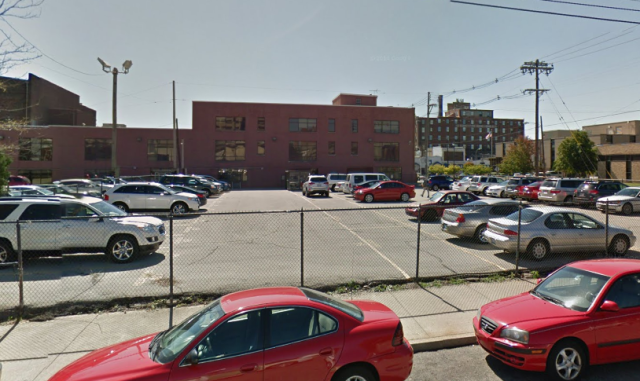













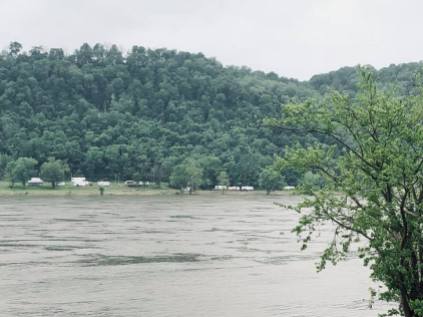

















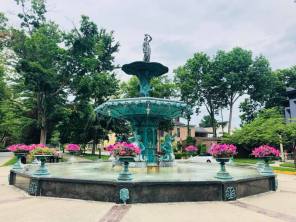














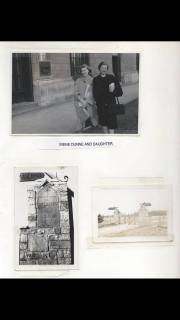
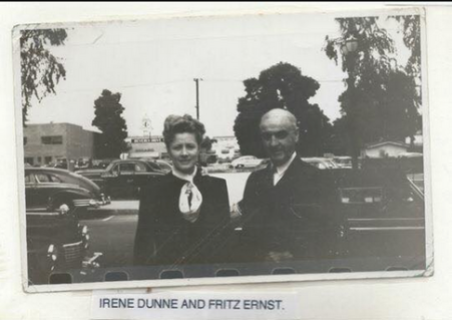






























This is a wonderful tribute to a wonderful actress, wife, and mother! Irene Dunne was truly “The First Lady of Hollywood,” in that her unimpeachable behavior both on and off set typified her solid mid-Western upbringing. I am a lifelong resident of Louisville and have made frequent visits to Madison over the years. Although I my parents and previous generations of family members had all told me about MIss Dunne having been from Louisville, it was only relatively recently that I was made aware of her Madison connection. I discovered this when I attended the Ohio Theater’s showing of “The Awful Truth,” part of a week-long celebration commemorating Madison’s honored citizen. I can’t think of any other actress who brought so much talent to the screen during Hollywood’s Golden Age. She was always way upfront and ahead of the dialogue and brought forward whatever humor that was to be found in a role. Her acting abilities were just as adept in dramatic roles. The sum of her talents onscreen are best reflected in “I Remember Mama,” and the sum of her talents off screen can still be seen today through the continued good works of the Irene Dunne Guild and the Frank D. and Irene D. Griffin Foundation.
thank you so much for all your research. How wonderful that you have a photo taken with Irene’s granddaughter.
Pingback: Van Johnson | Hometowns to Hollywood
Annette – thanks for this excellent tribute to Irene Dunne, one of the greatest performers from the 1930s and 1940s.
This was wonderful!! I did not know one of my favorite actresses was from here in Louisville. Thank you so much for sharing.
Pingback: Grauman’s Chinese Theatre Forecourt | Hometowns to Hollywood
I lived in the Woodruff Place building – you can see my old balcony from the photo you posted – and I loved hearing the Irene Dunne/conservatory story after moving in. As an amateur musician, I often wondered what the building looked like when the conservatory was in full swing and could kind of feel the vibes of it all in the walls. Wonderful.
Pingback: Calvary Cemetery | Hometowns to Hollywood
Is Irene’s daughter still living?
She is!
Pingback: Robert Taylor: Male Beauty, Masculinity, and Stardom in Hollywood | Hometowns to Hollywood
St Benedict Academy is mentioned as a school where Irene was educated by the Sisters of Loretto in Louisville. It was also known as Cedar Grove Academy and is still standing on Cedar Grove Court in the Portland area. The building was converted to an apartment building after the school relocated in1925.
Pingback: Allan Jones | Hometowns to Hollywood
Pingback: Robert Taylor | Hometowns to Hollywood
The white church is St. Mary/Madison, isn´t it? Do you have some information about father Charles Bilger, she was befriended with?
Pingback: Irene Dunne’s Vinegar Chocolate Cake | Hometowns to Hollywood
Pingback: Lovely to Look At (1952) | Hometowns to Hollywood
Great write up on Irene. She doesn’t get near the credit she deserves. We watched The Awful Truth a few weeks ago and it doesn’t get much better than that. I stopped by Irene’s house in Madison years ago and took some photos. It’s nice to see someone like you do a in depth tribute and research of her life. Thank you